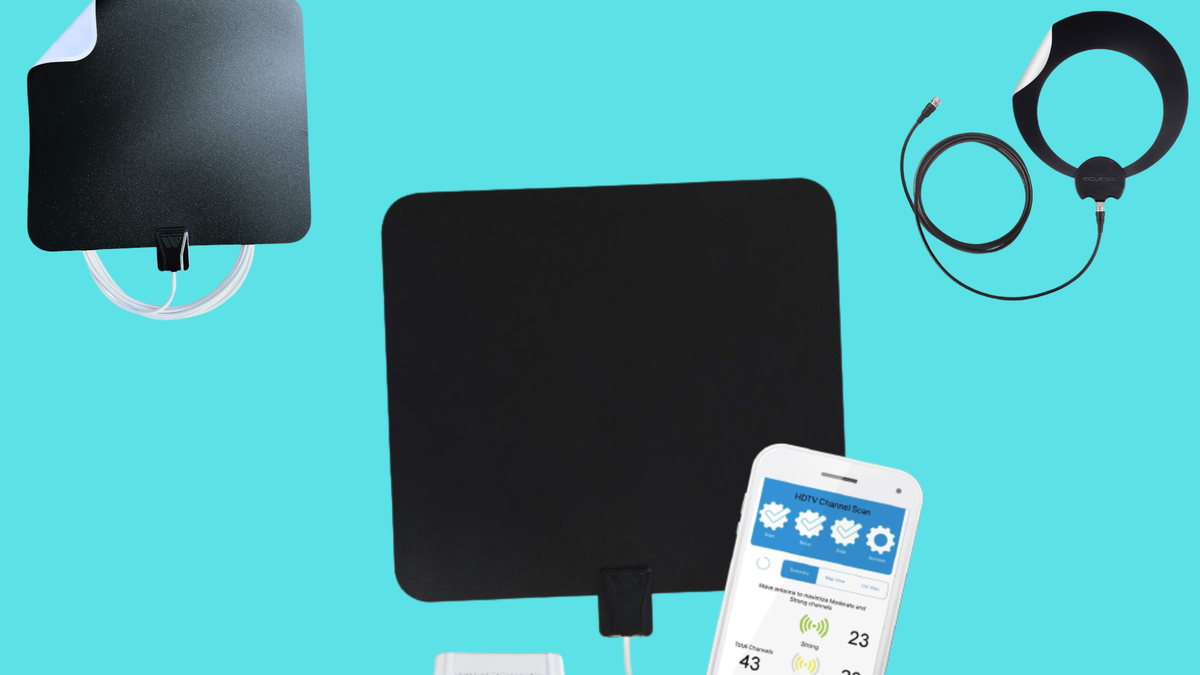These Indoor Digital TV Antennas (Might) Actually Work
No one wants to screw over the cable companies over more than me. When Comcast almost doubled my rate a few years ago I decided it was time to ditch the box and try something else, which led me...

No one wants to screw over the cable companies over more than me. When Comcast almost doubled my rate a few years ago I decided it was time to ditch the box and try something else, which led me to digital antennas.
The premise of a digital antenna sounds great. You bid farewell to a monthly bill, and using what amounts to a small box, get access to OTA (over the air) broadcasts that transmit in high definition (1080). If you are looking to just gain access to local networks and news, this probably sounds amazing. If you grew up with real television antenna (I did), digital promises a different experience. But promises and reality are not the same thing.
Do digital TV antennas really work?
Ehhh. What’s clear is that there are a few factors required if you want your antenna to actually work reliably. A good antenna with great range helps, knowing a bit about calibration helps, but to some degree, you live where you live and line of sight to a broadcast tower isn’t something you can really change. Most people who use digital antennas experience varying levels of success.
Personally, I tried a progression of more and more expensive antennas and all sorts of amplifiers before deciding I wasn’t willing to be constantly adjusting in the middle of the Super Bowl or the season finale of my favorite TV show. (Luckily, we now have more options for watching live TV, so you’re not absolutely stuck with your cable company.)
That said, if you want to give free broadcast signals a try, here’s what to look for.
What to expect from the best digital antennae
If you’re going to try the OTA route, experts seem to agree on a few pieces of advice–your antenna can’t be hidden behind a bookcase, and is best placed near a window or outside, and you should plan to spend more to get the best antenna you can—preferably one with an amplification feature. How much more? Well, even the most expensive antennas are under $150. Here are a few to consider.
Antennas Direct ClearStream Eclipse TV Antenna
This is a peel and stick antenna, which I’ll admit, I found interesting, and can you choose black or white so you don’t have a giant black spot on your window. It has a shorter range than other antennas, but good ratings, and it much less expensive. Reviewers noted that the shape of this antenna (circles) meant it received better UHF signals.
Price: $39.99
Maximum Range: 35 miles
Amplified: yes
Size: 10.1x 8.6x .04 inches
Buy the ClearStream Eclipse Antenna from Amazon ($40)
Winegard FL5500A FlatWave Amped Digital HD Indoor Amplified TV Antenna
This Winegard model, like it’s sister, is paper thin, which means that it mounts easily. It has a slightly shorter range, and that can affect how many channels you actually receive, but for the price drop, about half of the smart model, you might not care.
Price: $59.99
Number of channels: 36
Maximum Range: 50 miles
Amplified: yes
Size: 12x.06x13 inches
Buy the Winegard FL5500A Amplified TV Antenna ($60)
Winegard Flatwave Amped Pro HDTV Indoor Antenna
From every review online, Winegard seems to own the space and two of their models top the recommendations. Although they have similar results, I recommend the Amped Pro TH-3000. While it’s a bit more expensive than the comparable model below, it has additional smart functionality, and the real bonus is that the app serves to help you set up the antenna and calibrate it. As someone who’s been through it, you’ll really appreciate that benefit. Reviewers have noted the thinness of the unit being optimal, it stays where you stick it.
Price: $109.99
Number of channels: 36
Maximum Range: 60 miles
Amplified: yes
Size: 12x.06x13 inches

 AbJimroe
AbJimroe 































